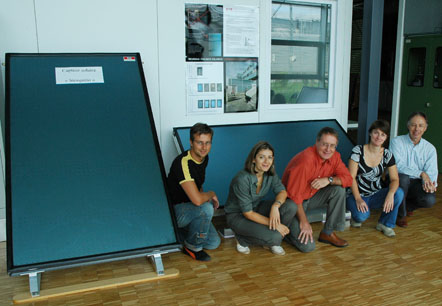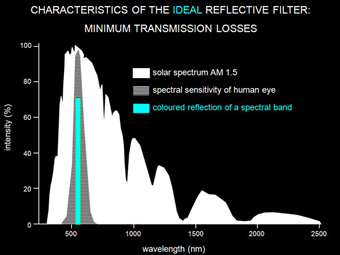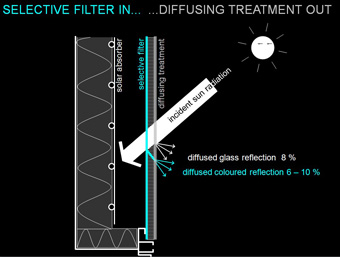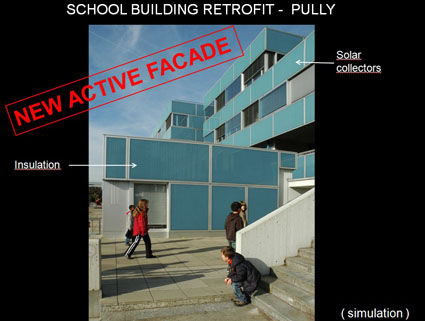Joint project by Andreas Schüler, Christian Roecker & Maria-Cristina Munari Probst
One main barrier to the acceptability of façade use of solar thermal collectors is their black appearance and the visibility of piping or absorber irregularities through the glazing. A large European Survey conducted by the LESO-PB in the framework of the project SOLABS gave an indication of how the technology could be improved to be widely acceptable to potential clients. As a consequence, developments focused on producing colored thermal collectors suitable for smooth façade integration.

To facilitate façade integration, the project developed selective filters reflecting only a small part of the solar spectrum in the visible range while letting the rest of the radiation heat the absorber.
These filters were successfully produced and, combined with a diffusing glass treatment, have achieved the desired masking effect with only a minor impact on the collector efficiency (less than 10%).
Glasses of various colours combined with several diffusing finishings (acid etching, structured glass etc…) can be produced that are able to hide the absorber. Such glazings will allow the use of the same product both on façade areas equipped with solar absorbers (as collector external glass) and in front of the non exposed areas (as façade cladding), opening the way to a broad variety of active façade designs. The active elements can then be positioned at will on the exposed areas, and their quantity determined only by thermal needs.
By freeing the dimension of the façade area that can be clad with this glazing from the thermally needed surface for collectors, a major step to help architects use solar thermal technology on facades has been taken. Present work concentrates on adapting the results to regulation and costs constraints.
 |
 |
| The idea: Reflect a narrow band in the visible range | Principle of operation: coloured reflection |
First results:

Active façade with same glass in front of collectors (south oriented parts) and insulation